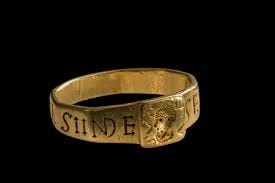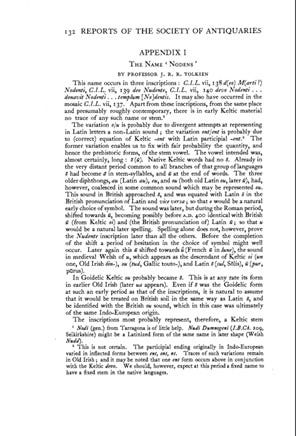1928 was a big year for the famous archaeologist Sir Mortimer Wheeler, one of the most important archaeologists in the history of archeology (See: The History of Archaeology). In that year he excavated the amphitheater in Caerleon, it was about this amphitheater that the 12th-century writer Geoffrey of Monmouth, a so called historian who possibly infused his historical writings with an abundance of fiction, wrote in his History of the Kings of Britain, in his writings he mentions that Arthur was crowned there in Caerleon and that the ruins of the amphitheatre are the remains of King Arthur’s world famous Round Table. But that was just the beginning.
Following this excavation, Wheeler went on to excavate a temple at the site of Lydney Park. It was during his excavations there, that Wheeler found the remains of a Roman settlement and camp, which were presumably built to guard the iron quarries of the 3rd century CE. After the site was abandoned, during the 4th century CE, a temple to the God Nodens, God of sea, health, dogs and Celtic hunting was built at the site.
The excavations of the temple exposed an elaborate mosaic floor in the sacred room, the mosaic depicts dolphins, fish and even sea monsters. In addition, over 300 rings were found there and some 8,000 coins, all indicating that the compound was important and central. According to the excavation finds, the site and the temple fell into disuse in the 5th century CE and were comlpetley abandoned after that.
But the most interesting find from this excavation was actually a lead plate with the inscription:
"For the god Nodens. Silvianus has lost a ring and has donated one half [its worth] to Nodens. Among those named Senicianus permit no good health until it is returned to the temple of Nodens”.
All this brings us back to 1785, when a gold ring was found while a farmer was plowing his field about 150 miles east of Lidney Park. According to the story, the ring, called "Silvianus' Ring", belonged to a Roman named Silvanus and was probably stolen from him by another Roman named Senicianus. Silvanus was so angry at the theft that he then cursed the thief.
Wheeler was already well aware of the story and folklore surrouding the ring, and when he excavated in Lydney Park and found the lead board with the inscription, he suspected there was a connection. But he wasn’t entirely sure, so he decided to bring in an expert.
This expert was a young professor from Oxford, an ancient English language expert named John Ronald Reuel Tolkien. Wheeler invited him to the excavation to help him decipher the lead board. Professor Tolkien began work on the decipherment immediatly and indeed deciphered the inscription (See above). He then wrote the appendix about the inscription and Lord Nodens in Wheeler's final academic excavation report.
Now, if we connect all the dot, suddenly a great story unfolds. Take a mystical gold ring that has been stolen, add to that a curse that the ring owner has placed on the thief of the ring, place the whole story in the green rural hills of southern Britain and it suddenly starts to sound very very familiar.
It appears to be more than just coincidence, and seems highly likely that the decipherment of the lead board from Lydney Park, served as the inspiration that led J.R.R Tolkien to write “The Hobbit” which later tled to the writing of “The Lord of the Rings”
.
Tolkien, J., R., R. 1932, "The Name Nodens", Appendix to Report on the excavation of the prehistoric, Roman and post-Roman site in Lydney Park, Gloucestershire. Reports of the Research Committee of the Society of Antiquaries of London.
Tolkien, J., R., R. 1999, The Lord of the Rings (Millennium Edition). Houghton Mifflin




